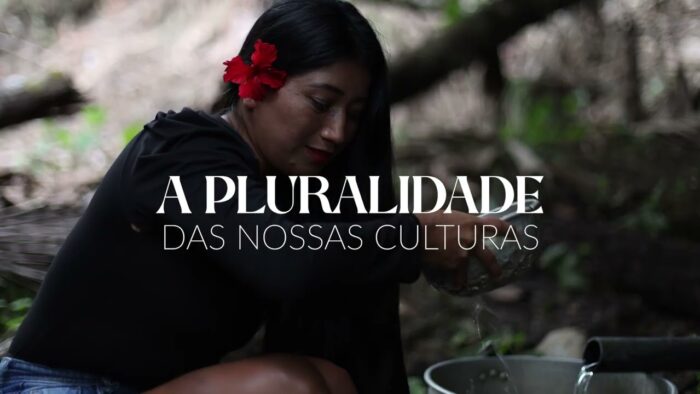Стратегии бережного использования лесных ресурсов отвечают интересам населения и окружающей среды
Применение “интеллектуальных” технологий не должно ограничиваться сотовыми телефонами. Пора применять некоторые их свойства – широкие возможности, универсальность и преобразовательный потенциал – в деле рационального использования одного из основных природных ресурсов планеты: лесов. Что означает «бережное использование лесных ресурсов»? В сущности, это проведение комплексной оценки состояния ландшафтов, с тем чтобы понять, как влияет хозяйственная деятельность в других секторах экономики на состояние лесов, и определить пути приумножения выгод, получаемых нами от леса. С одной стороны, уничтожение лесов и ухудшение их состояния происходит под влиянием различных факторов, в том числе таких, как расширение площадей сельскохозяйственных угодий, строительство дорог и шахт, потребность в древесном топливе. С другой стороны, даже при том, что эти виды деятельности имеют первостепенное значение для экономического развития стран и благополучия местного населения, они могут иметь негативные последствия для способности лесов выполнять важнейшие функции, такие как поглощение углерода, фильтрация воздуха и воды, повышение плодородия почв, а также являться источником доходов и фактором обеспечения занятости. С учетом этих разнонаправленных факторов Группа Всемирного банка стремится найти сферы взаимодополняемости между этими различными секторами, с тем чтобы продвинуть повестку дня как в области борьбы с изменением климата, так и в области развития. Этот подход, сформулированный в принятом Группой Всемирного банка Плане действий в отношении лесов (Forest Action Plan) на 2016-2010 финансовые годы, является ключевой составляющей достижения установленных ею целей в области сокращения бедности с учетом значения лесов для малообеспеченного населения: в мировом масштабе лесные ресурсы позволяют одному из 11 человек выбраться из крайней бедности. Помимо 300-350 миллионов человек, живущих в лесах или на небольшом удалении от них и почти полностью от них зависящих, сотни миллионов других людей тоже используют леса в качестве источников продуктов питания, строительных материалов и энергии. Реализация этого подхода потребует сотрудничества с различными партнерами с целью выявления взаимовыгодных возможностей и выработки новаторских решений для последующего их масштабного внедрения. В этом отношении Всемирный банк может использовать квалификацию и опыт своих специалистов в самых разных секторах, не ограничиваясь лесным хозяйством, в частности, в добывающих отраслях промышленности, в сфере инфраструктуры, деятельности по снижению риска стихийных бедствий, в области энергетики и сельского хозяйства. В качестве примера деятельности Всемирного банка по внедрению этого подхода можно привести проект стоимостью в 47 млн долл. США, осуществляемый в Мозамбике ($47-million project in Mozambique), где в настоящее время площадь лесов сокращается примерно на 140 тысяч гектаров ежегодно. В рамках проекта средства инвестируются в создание источников доходов для тысяч владельцев мелких и средних участков земли, благодаря чему повышается экологическая устойчивость видов деятельности, потенциально оказывающих негативное влияние на состояние лесов, таких как заготовка древесины, производство древесного угля и выращивание сельскохозяйственных культур, при параллельном снижении масштабов уничтожения лесов и объемов выбросов «парниковых» газов в атмосферу. Лесохозяйственный сектор уже в настоящее время дает почти 3% ВВП Мозамбика (оценка 2011 года) и обеспечивает работой 22 тысячи человек, при этом имеются возможности для значительного увеличения этих показателей. Еще один пример – деятельность Всемирного банка в Молдове, где большинство малообеспеченного населения живет за счет сельского хозяйства, но конкурентоспособность экспорта сельскохозяйственной продукции остается относительно низкой. Проект по повышению конкурентоспособности сельского хозяйства Молдовы (Moldova Agriculture Competitiveness Project) имеет в качестве одной из своих целей расширение использования методов устойчивого землепользования, в том числе создание лесозащитных полос, которые могут сократить масштабы эрозии почв и увеличить показатели поглощения углерода при повышении прибыльности труда фермеров. Кроме того, мы все более эффективно используем создаваемые лесами выгоды для снижения рисков, связанных со стихийными бедствиями. Так, например, мангровые леса могут не только обеспечивать защиту от бурь, наводнений и береговой эрозии, но и служить ценной средой обитания для различных видов животных, а это, в свою очередь, положительно сказывается на рыбном хозяйстве, туризме и занятости местного населения. На Ямайке – одной из наиболее уязвимых стран мира в отношении стихийных бедствий – реализуется проект стоимостью в 30 млн долл. США ($30-million project), направленный на оказание помощи правительству в повышении готовности страны к таким угрозам, в том числе на основе комплексного внедрения решений в области развития инфраструктуры с учетом природных условий. При дополнительной поддержке по линии Программы по лесам (Program on Forests) и Глобального фонда по снижению риска стихийных бедствий и ликвидации их последствий (Global Facility for Disaster Risk and Recovery) этот проект позволит 300 тысячам жителей Ямайки лучше подготовиться к изменению климата. Независимо от обусловливающих их причин, изменения лесного покрова земли могут иметь реальные и масштабные последствия для местных общин и их благополучия, а также для климата планеты в целом. В условиях современного все более сложного и взаимосвязанного мира проблемы развития требуют глобальных ответов, в том числе и для сохранения лесов. Международный день лесов, отмечаемый 21 марта, служит для нас своевременным напоминанием о том, что бережное использование лесных ресурсов имеет первостепенное значение для реализации целей устойчивого развития. А как обстоят дела у вас? Чтобы узнать ответ, пройдите проверочный опрос!


